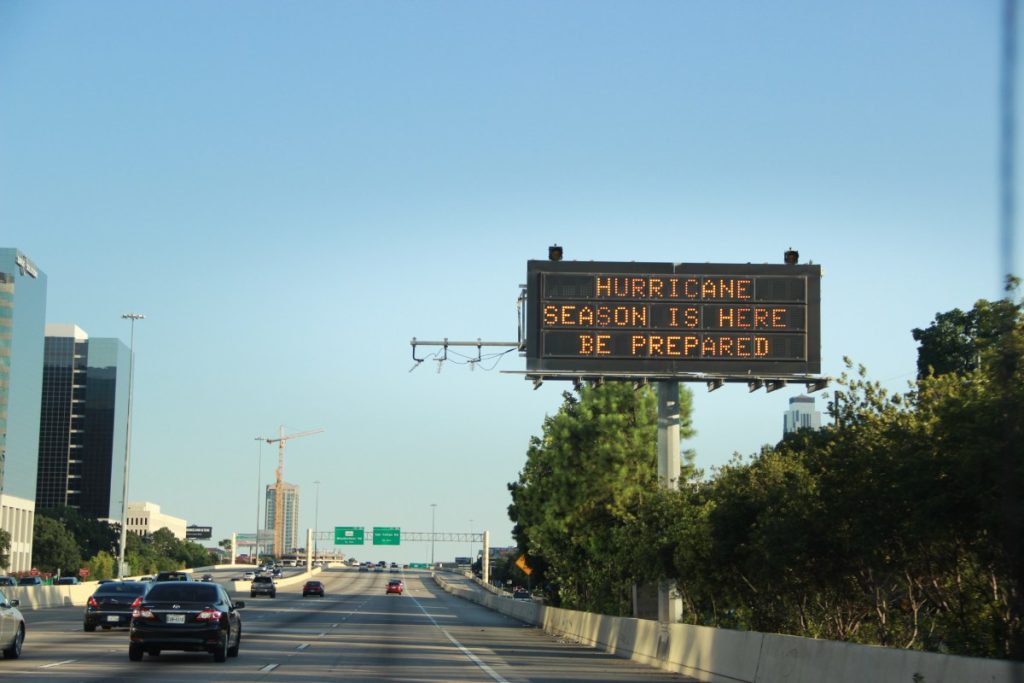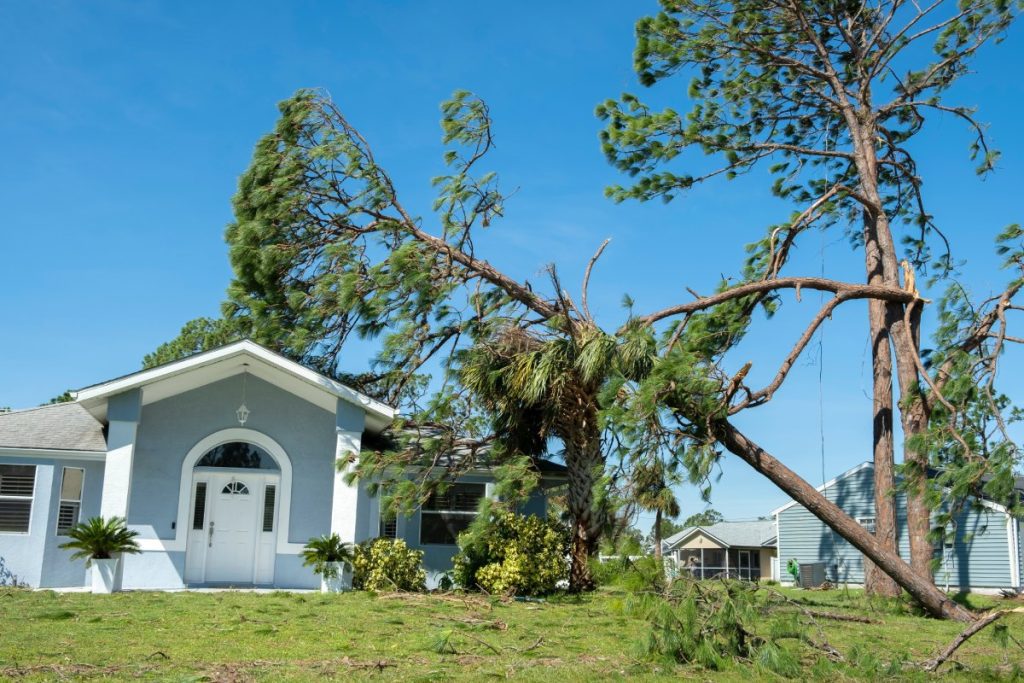Picture this: A hurricane tears through your Houston neighborhood, ripping the roof off your house and flooding the first floor. It’s a disaster, but you have the homeowners insurance your lender required, so you’re confident you’ll be made whole.
Then the bills arrive. Your insurance company covers $80,000, but repairs cost $150,000. That $70,000 difference? It’s coming straight out of your pocket. The average hurricane causes $23 billion in damage, according to the National Oceanic and Atmospheric Administration (NOAA), and all that money has to come from somewhere.
This scenario plays out across Texas every hurricane season. Why? Because most homeowners operate under a dangerous misconception: that the windstorm insurance policy required by their mortgage lender provides complete protection against hurricane damage. The harsh reality is that lender-required insurance coverage serves one primary purpose: protecting the bank’s investment, not yours.
This post will expose the critical gaps in mortgage-required hurricane insurance and explain why minimum coverage leaves Texas policyholders financially vulnerable. We’ll break down the difference between what satisfies your lender versus what actually protects your investment, reveal common coverage shortfalls, and show you how to secure comprehensive protection before the next storm hits.
The Lender’s Requirement vs. Your Financial Reality
Your mortgage company requires homeowners insurance for one simple reason: to protect its financial stake in your property. If disaster destroys your home, they want assurance they’ll recover their loan balance. Your personal financial security isn’t their concern.
This protection-first mentality typically translates to bare-minimum requirements that may only cover the outstanding loan balance, not the full replacement cost of your home. For many Texas homeowners, especially those who’ve been paying their mortgage for several years, this creates a substantial coverage gap.
Consider this example: You owe $200,000 on a home worth $350,000. Your lender might accept a policy with $200,000 in dwelling coverage—enough to pay off the mortgage if your house is destroyed. But if rebuilding costs $350,000 due to updated building codes and rising construction costs, you’re personally responsible for that $150,000 difference.
The same applies to mortgage-required wind insurance. Windstorm coverage forms a key component of hurricane protection, but comprehensive hurricane insurance often requires multiple policies. A standard homeowners policy might include wind coverage but exclude flood damage, even though flooding is one of the most destructive aspects of a hurricane.
In short, there’s often a big difference between a policy that satisfies your mortgage company’s requirements and one that actually protects your investment and prevents catastrophic out-of-pocket expenses after a disaster.
The Five-Figure Gap: Where Your Policy Falls Short
Real-world examples from across Texas demonstrate how mortgage-required windstorm coverage often meets only the bare minimum lender requirements, leaving families facing massive repair bills after storms.
The High Deductible Trap
Sarah from Galveston learned about windstorm policy deductibles the hard way. Her TWIA policy carried a 5% hurricane deductible on her $300,000 home. When Hurricane Ike caused $35,000 in damage, she had to pay the first $15,000 out of pocket before her insurance company contributed a single dollar. The mortgage-required policy satisfied her lender, but left her scrambling to cover unexpected costs.
Inadequate Dwelling Coverage Limits
The Martinez family in Corpus Christi discovered their dwelling coverage fell short when Hurricane Harvey damaged their home. Their policy limit of $180,000 seemed adequate when they purchased it five years earlier. However, new building codes and increased construction costs meant rebuilding required $240,000. Their insurance company paid the policy maximum, leaving the family on the hook for $60,000—money they didn’t have.
The Storm Surge Exclusion
A Port Arthur homeowner thought his standard homeowners insurance policy would cover all hurricane damage. When storm surge from Hurricane Rita flooded his first floor, causing $45,000 in damage, he learned that rising water damage required a separate flood insurance policy. His mortgage-required coverage excluded flood damage entirely, leaving him responsible for the full cost of repairs.
These aren’t isolated incidents. They represent a pattern of underinsurance that affects thousands of Texas families every hurricane season.
Decoding Your Protection: Key Insurance Policies for Texas Homeowners
The type of coverage you need most to protect your Texas home from hurricane damage will vary depending on your location. A house in a low-lying coastal area will always face a high risk of flooding, while houses that are further inland face a different set of risks. Your home insurance policy strategy should reflect these realities.
Homeowners Insurance
A standard homeowners policy provides basic protection for your dwelling, personal belongings, and liability coverage. However, what it excludes proves just as necessary as what it covers. Most homeowners policies exclude flood damage, earth movement, and sometimes wind damage in coastal areas.
Your homeowners insurance policy typically covers:
- Fire and smoke damage
- Theft and vandalism
- Some types of water damage (but not flooding)
- Personal liability
- Additional living expenses if your home becomes uninhabitable
The Key Limitation: Flood damage is almost never covered by standard homeowners insurance policies, regardless of the cause.
Windstorm Insurance
Texas coastal areas often require separate windstorm coverage, frequently provided by the Texas Windstorm Insurance Association (TWIA) or by private insurance providers. TWIA serves as the Texas insurance of last resort for windstorm coverage in designated coastal counties.
What types of damage does windstorm insurance cover? These policies typically protect against:
- Wind damage to your roof, siding, and windows
- Hail damage to exterior surfaces
- Debris removal after wind damage
- Additional living expenses if wind damage makes your home uninhabitable
Critical Limitation: Windstorm policies cover damage from wind and hail damage but exclude damage from rising water, including storm surge.
Flood Insurance
This represents the most critical gap in hurricane protection. Flood damage remains almost universally excluded from standard homeowners insurance policies and windstorm coverage. You need a separate flood insurance policy through the National Flood Insurance Program (NFIP) or from a private insurance carrier.
Flood coverage protects against:
- Rising water from storms, including storm surge
- Sewer backup (with additional coverage)
- Groundwater seepage
- Mudflow
Remember: the crucial 30-day waiting period before flood insurance takes effect. You can’t wait until a hurricane is approaching to purchase flood coverage—it must be in place well before the next hurricane hits.
Don’t Wait for the Storm: Secure Your Financial Future
The evidence is clear: mortgage-required insurance only provides bare minimum protection; it isn’t comprehensive coverage. You need to understand the limitations of your insurance policy so you can find and close any coverage gaps that put your financial future at risk.
Texas policyholders face unique challenges. Coastal areas require windstorm insurance, often through TWIA, while inland properties might rely more heavily on standard homeowners policies. Regardless of location, flood insurance remains essential throughout most of the state.
The risk of being underinsured extends beyond immediate repair costs. Inadequate coverage can force families from their homes, drain their life savings, and create financial hardship that lasts years beyond the storm. The time to address these gaps is now, before the next hurricane hits.
Ready to protect your Texas home beyond minimum lender requirements? The attorneys at Merlin Law Group have been helping policyholders since 1985. We understand what policies homeowners need to protect themselves and how to fight back against insurers that fail to live up to their promises.
Contact us to discuss a claim that’s been wrongfully delayed, denied, or underpaid.
FAQs About Texas Hurricane Insurance
How Much Is Hurricane Insurance in Texas?
The average cost for Texans varies significantly based on several factors, including your location (coastal versus inland areas), home value, deductible choice, and the availability of insurance providers. Coastal properties typically command higher prices due to their higher risk exposure. Obtaining insurance quotes from multiple providers provides the most accurate pricing for your specific situation. TWIA rates are regulated by the Texas Department of Insurance, while private insurance rates vary by company.
Can You Get Hurricane Insurance in Texas?
Yes, but comprehensive hurricane protection often requires combining multiple policies. Homeowners insurance provides basic coverage, while windstorm insurance (through TWIA or private insurance) covers wind and hail damage. A separate policy for flood insurance protects against rising water. Your insurance agent can help coordinate these different types of coverage to ensure complete protection.
What Texas Counties Are Most at Risk for Hurricane Damage?
Coastal counties face the highest risk, including Galveston, Harris, Jefferson, Brazoria, and Cameron counties. These areas typically require windstorm coverage and have the most significant exposure to storm surge. However, inland counties also face significant risk from flooding and tornadoes associated with hurricanes.
How Do I File a TWIA Claim?
Start by contacting your insurance agent as soon as you discover damage. Document all damage with photographs before making temporary repairs. Keep all important documents related to your claim, including correspondence with TWIA and receipts for emergency repairs. The claims process requires prompt notification, so don’t delay in reporting your loss.




